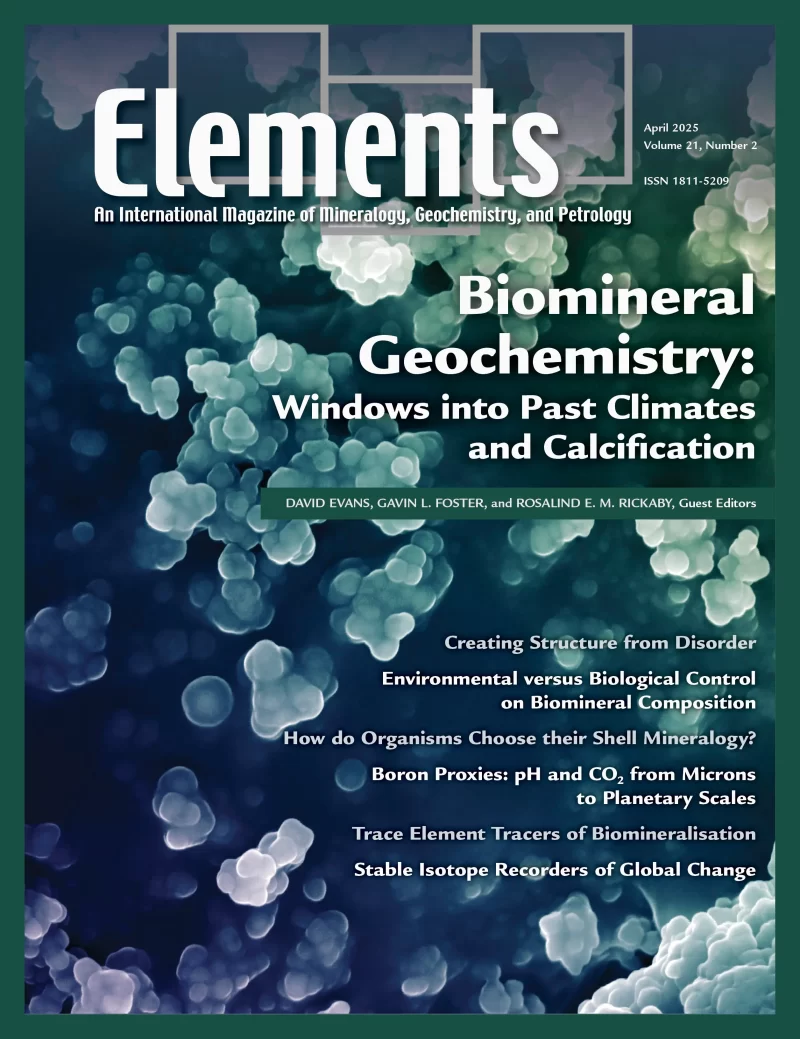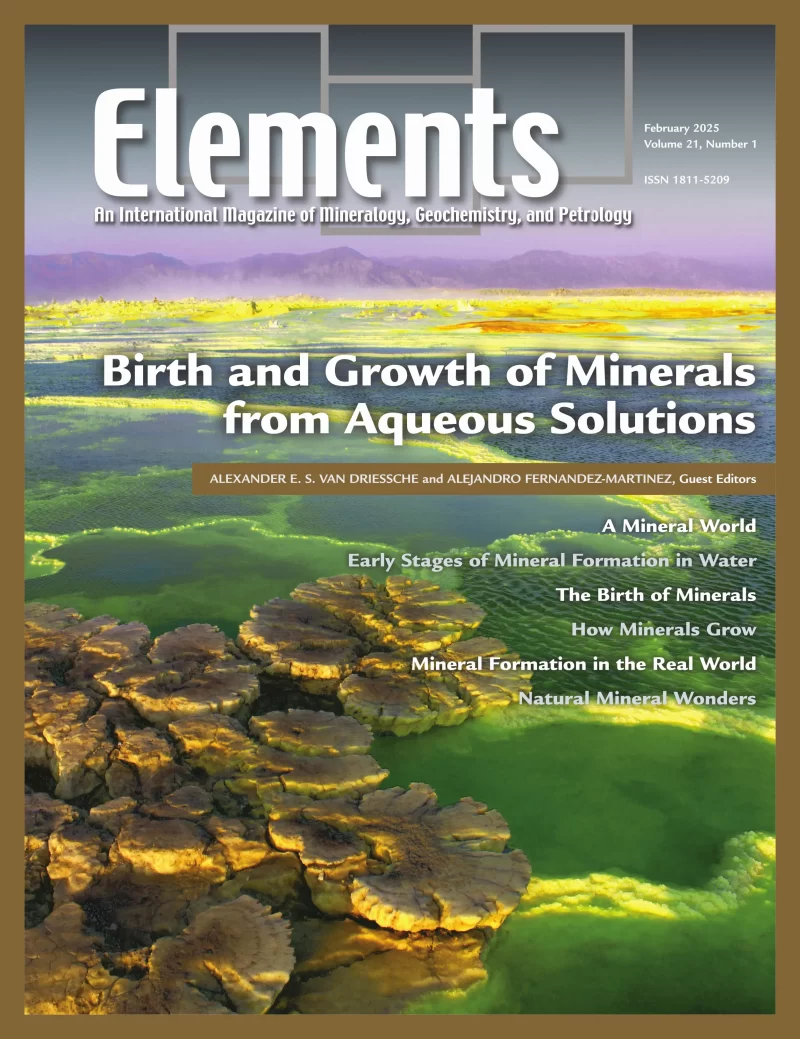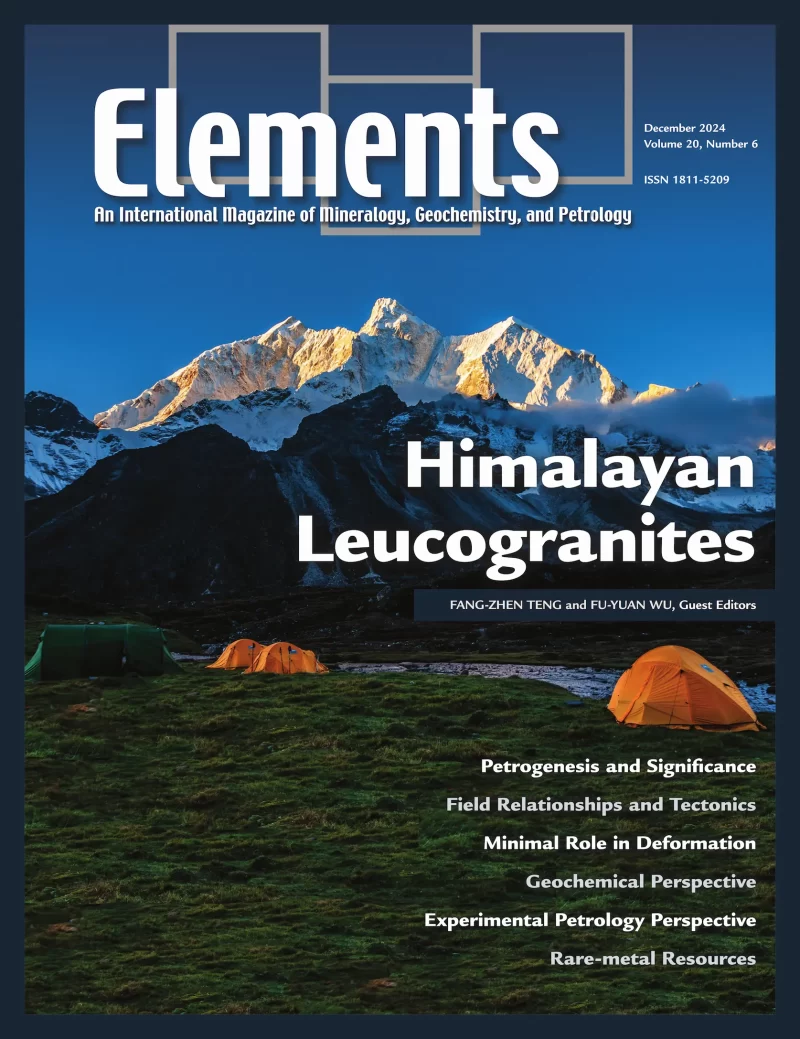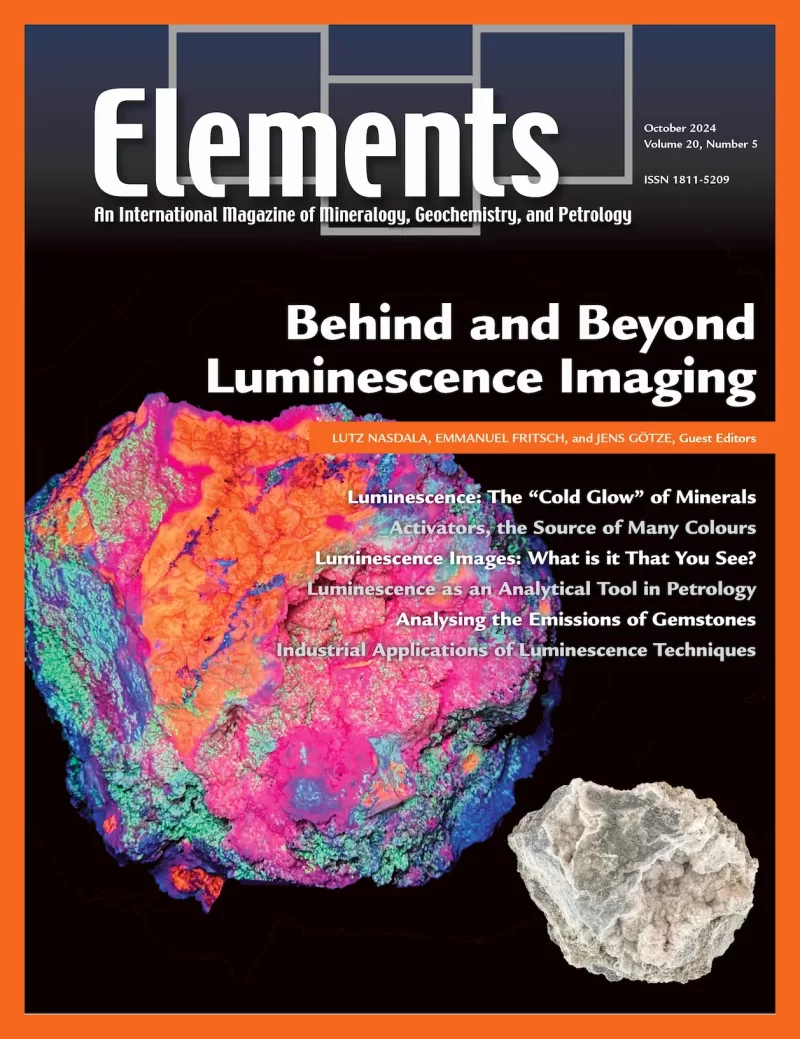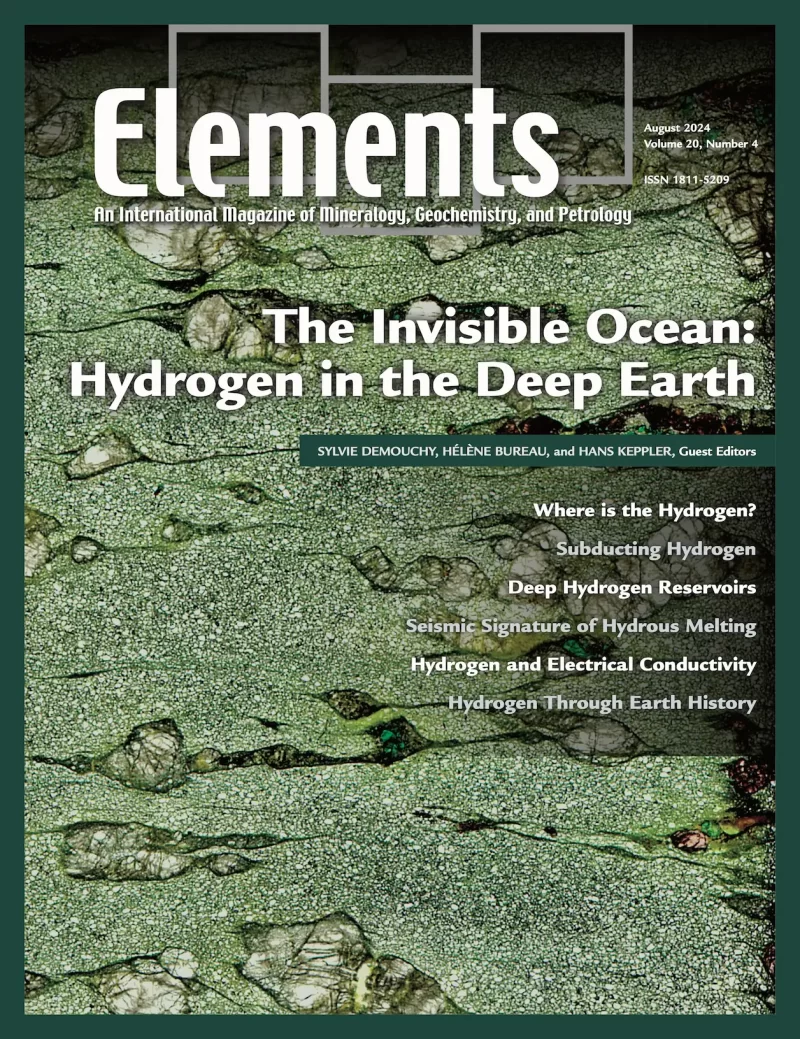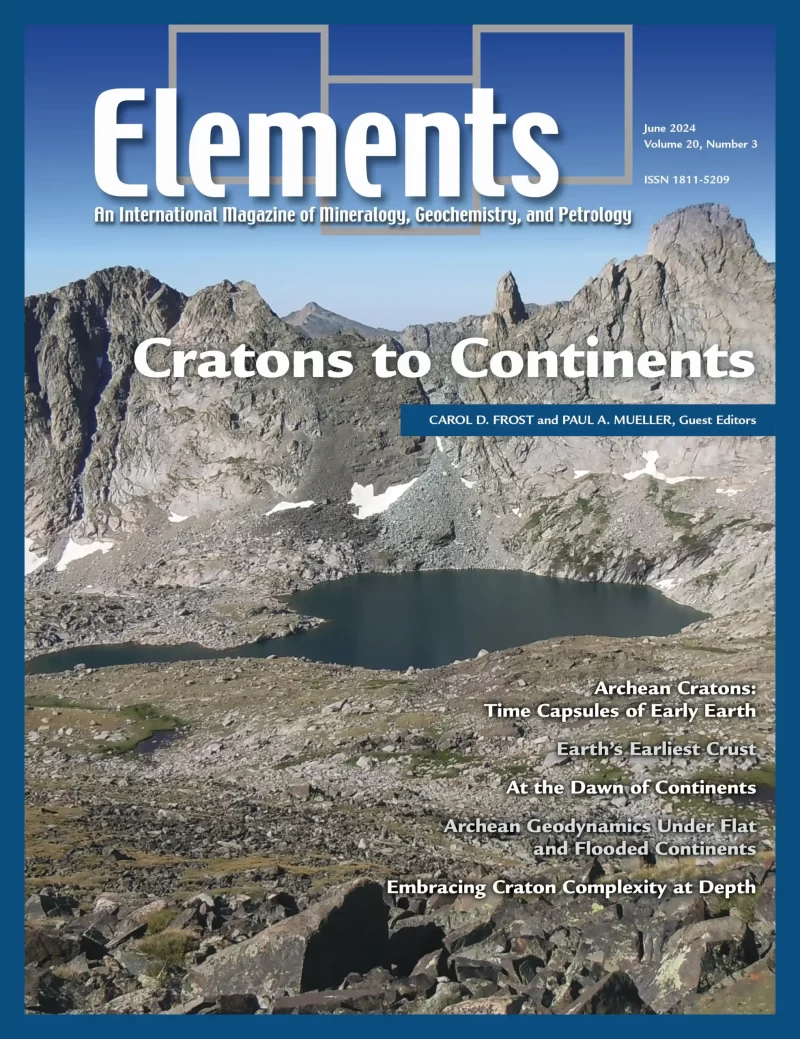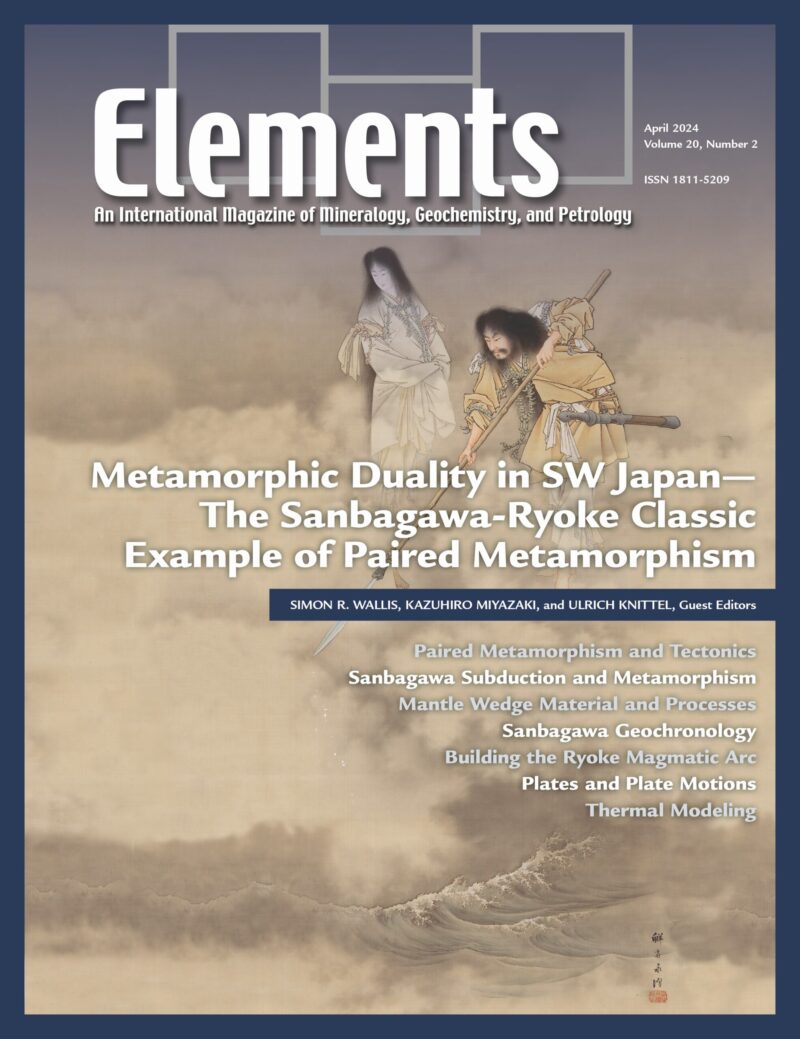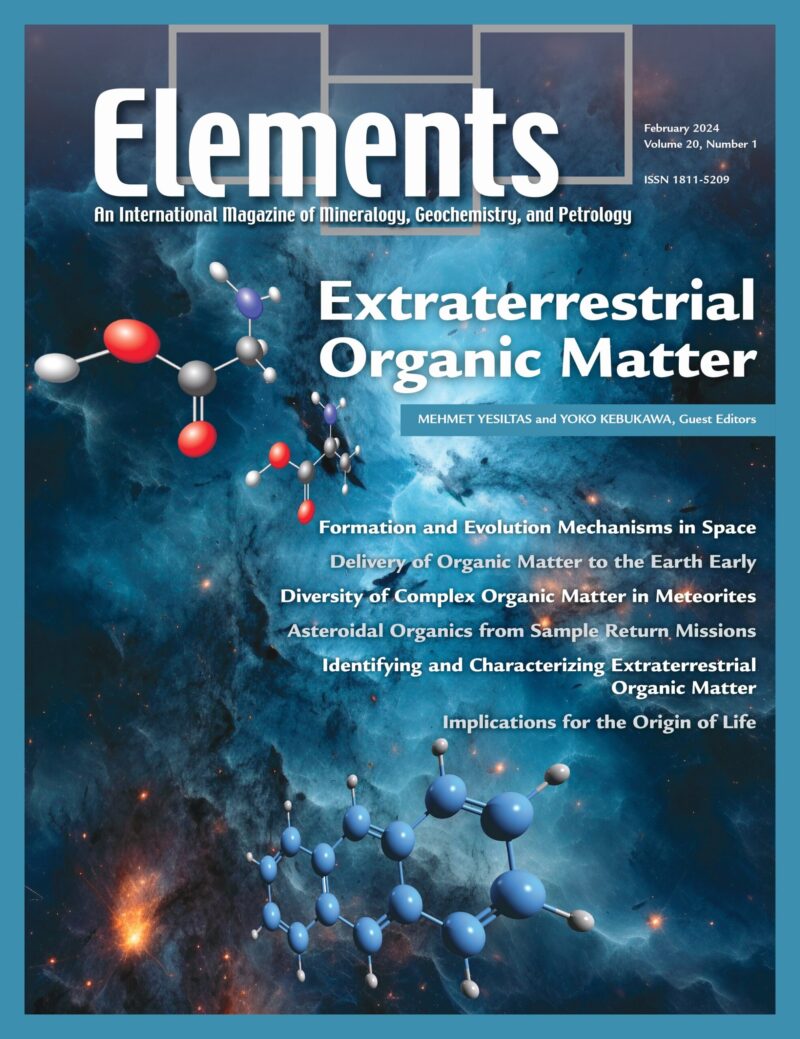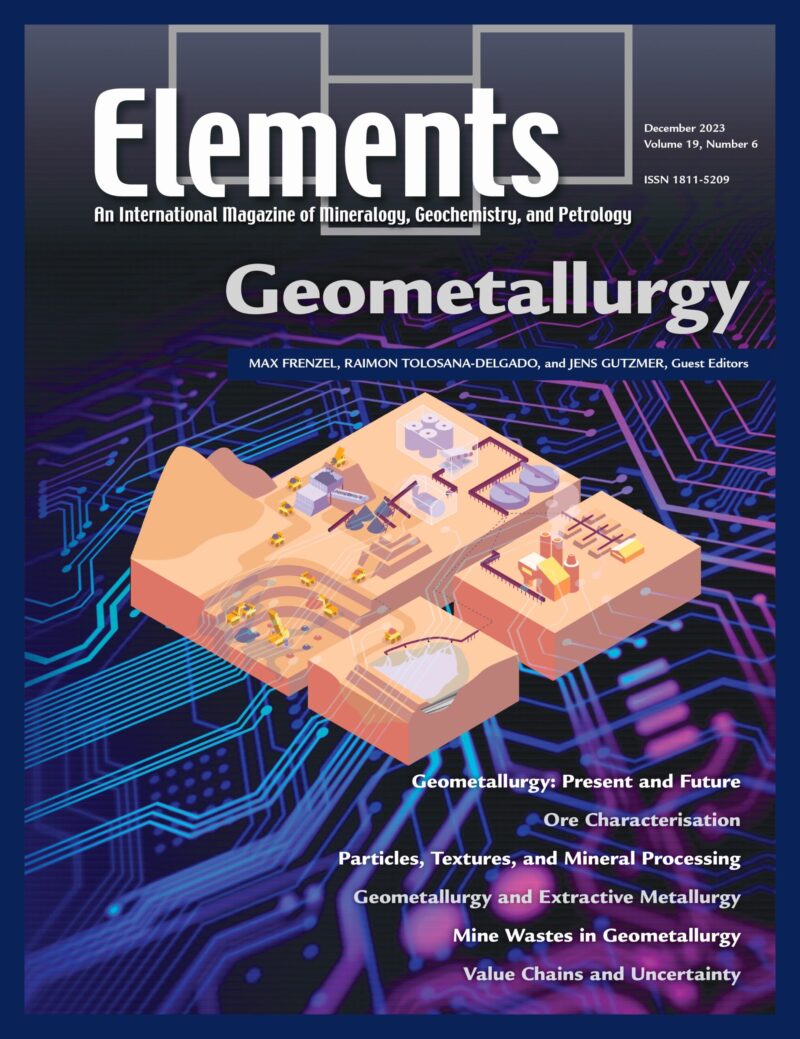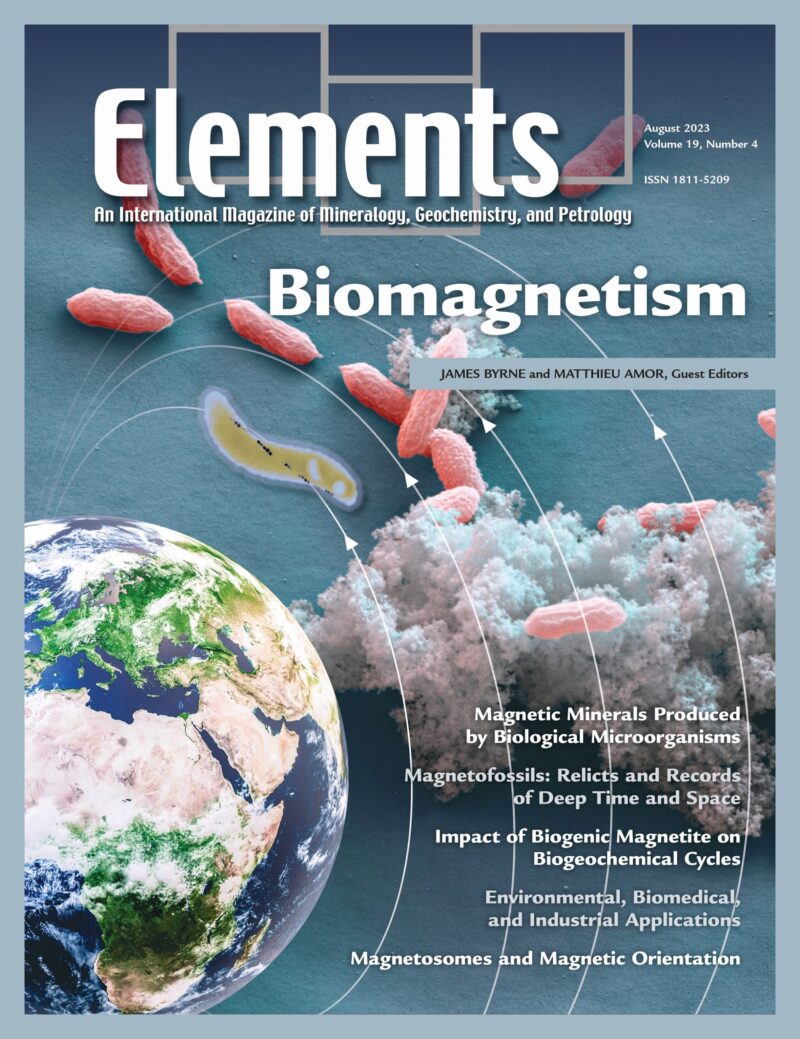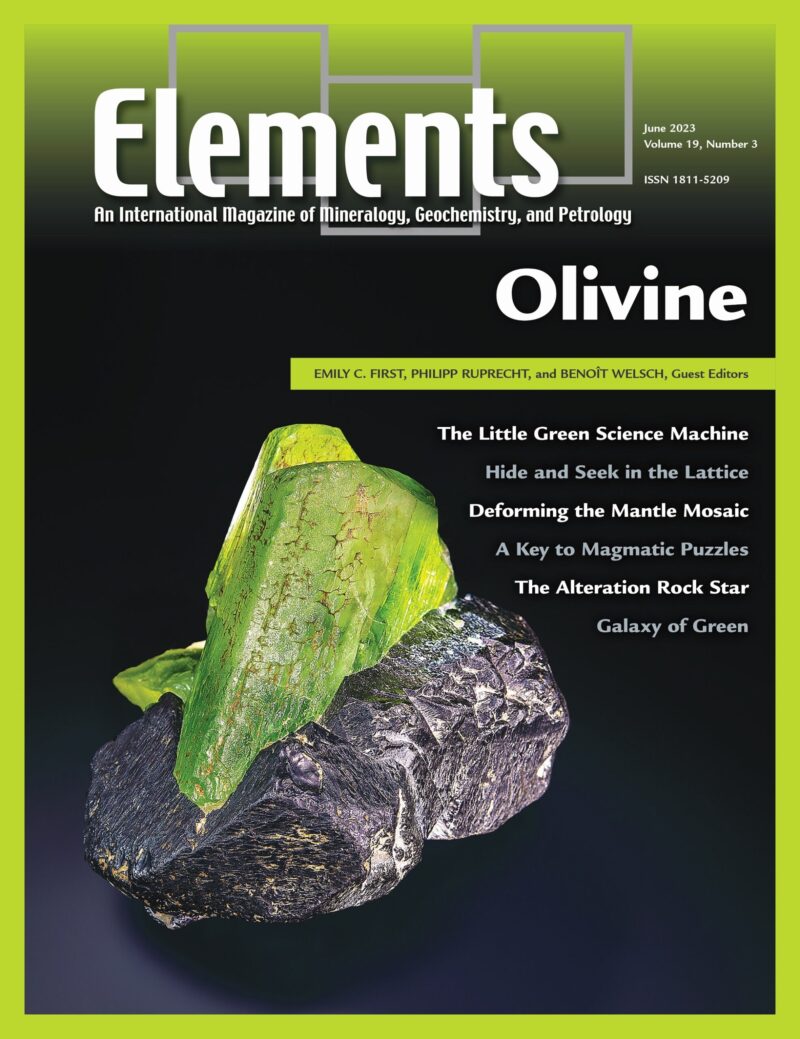-
Biomineral Geochemistry: Windows into Past Climates and Calcification, April 2025, Vol. 21, No. 2
$20.00Marine calcium carbonate biominerals, especially the shells and skeletons produced by molluscs, corals, and the immeasurably numerous calcifying phytoplankton and zooplankton, are of both societal and environmental importance for two key reasons. Firstly, the mineralised remains of these organisms are one of the largest longterm sinks of carbon on Earth’s surface. Secondly, and perhaps more practically, the (trace) element and isotopic composition of these biominerals probably represents the most widely applied tool for quantitatively reconstructing past environmental conditions on timescales from days to millions of years.
-
Birth and Growth of Minerals from Aqueous Solutions, February 2025, Vol. 21, No. 1
$20.00The birth and growth of minerals from aqueous solutions is a ubiquitous process in both natural and engineered environments. This research field has recently experienced a paradigm shift due to the discovery of non-classical nucleation and growth processes.
-
Himalayan Leucogranites, December 2024, Vol. 20, No. 6
$20.00Himalayan leucogranites crop out intermittently over 2000 km along the Himalayan crest in the Himalayan-Tibetan plateau. They constitute some of the most well-studied granites in the world. They are considered to be purely crustal-derived melts and indicators of collisional orogenesis, and have greatly improved our general understanding of crustal anatexis, differentiation of felsic magmas, and tectonic evolution of the Himalayan-Tibetan Orogen.
-
Behind and Beyond Luminescence Imaging, October 2024, Vol. 20, No. 5
$20.00Luminescence-based optical or SEM images are increasingly used in Earth sciences research. Examples include formation and post-growth history of minerals from their internal textures, taking into account multiple interior regions of complex crystals. For such simple approaches it is actually unnecessary to understand the particular causes of emissions.
-
The Invisible Ocean: Hydrogen in the Deep Earth, August 2024, Vol. 20, No. 4
$20.00Hydrogen is the most abundant element in the universe and its distribution, transfer, and speciation in the deep Earth remain a fascinating topic of ongoing research. We review the most notable discoveries constraining the H cycle in the deep Earth. This includes new methods for detecting hydrogen, insights into the size of deep reservoirs, and new constraints from inclusions in ultradeep diamonds.
-
Cratons to Continents, June 2024, Vol. 20, No. 3
$20.00Archean continental crust is present on every continent, but does not constitute a dominant part of any continent’s surficial exposures. Nevertheless, Archean cratons are the longestlived coherent physical structures on earth.
-
Metamorphic Duality in SW Japan—The Sanbagawa-Ryoke Classic Example of Paired Metamorphism, April 2024, Vol. 20, No. 2
$20.00Subduction, where one plate dives beneath another, controls longterm wholeEarth cycling of rocks, fluids and energy. Plates subduct faster than they heat up, making them the coldest parts of the Earth’s interior.
-
Extraterrestrial Organic Matter, January 2024, Vol. 20, No. 1
$20.00Extraterrestrial organic matter is found in various extraterrestrial environments and in various forms. It forms in a variety of locations through different mechanisms in space.
-
Geometallurgy, December 2023, Vol. 19, No. 6
$20.00Geometallurgy is an interdisciplinary research field concerned with the planning, monitoring, and optimization of mineral resource extraction and processing. Geometallurgy requires a quantitative understanding of primary resource characteristics such as mineralogical composition and texture, the distribution and variability of these characteristics across the target ore body, and how these interact with mining and beneficiation processes.
-
Large Igneous Provinces: Versatile Drivers Of Global Change, October 2023, Vol. 19, No. 5
$20.00Earth’s history is punctuated by volcanic episodes at a scale never witnessed by humans, known as large igneous provinces (LIPs). These extraordinary volcanic and tectonic events are associated with profound changes to planet Earth, including its climate and habitability.
-
Biomagnetism, August 2023, Vol. 19, No. 4
$20.00In this thematic issue of Elements, we look into biomagnetism and the production of magnetic minerals by microorganisms. In popular culture, this may have supernatural connotations; however, in reality, there are many microscopic biological organisms possessing magnetic behaviour owing to their formation of magnetic nanoparticles (MNP) such as magnetite (Fe3O4), maghemite (γ-Fe2O3), and greigite (Fe3S4).
-
Olivine, June 2023, Vol. 19, No. 3
$20.00To study the Earth and other planetary bodies, one has to understand the mineral olivine; when and where it forms, how it crystallizes and deforms, and how it responds to changing environmental conditions in the Earth’s interior, on the surface, and in space. This issue takes a look at olivine research from the atomic scale to the Solar System and beyond.

